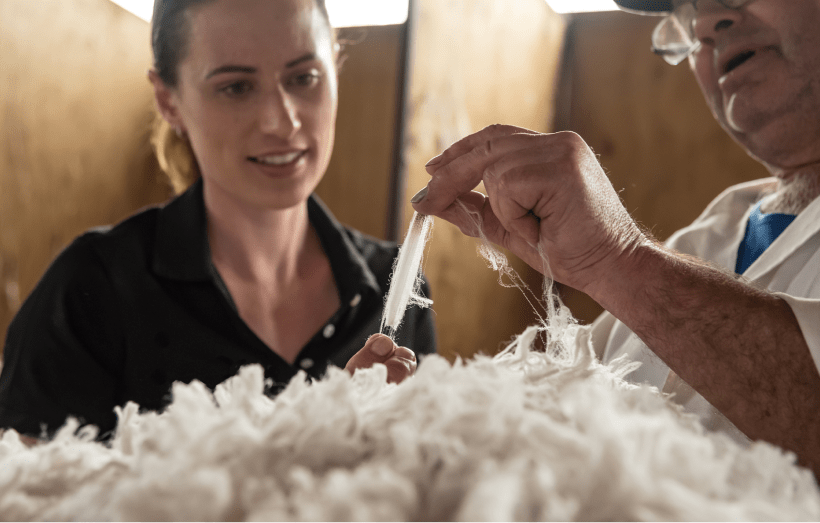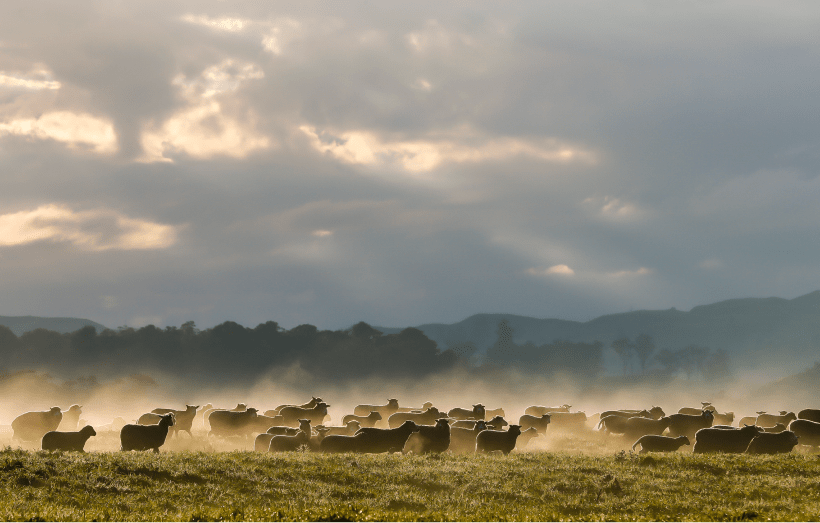
OUR PATH TO CARBON REDUCTION
Earth’s climate is changing.
We are too.

OUR PATH TO CARBON REDUCTION
Earth’s climate is changing.
We are too.
The science is clear: We can still save
the planet, but we have to work fast—and work together.
The Situation:
Too Much Carbon
Humans are emitting far too much carbon into the atmosphere, and it’s destabilizing Earth’s climate. We need to reduce carbon emissions to limit warming to 1.5°C, as called for in the Paris Agreement.

Global temperature anomalies averaged and adjusted to early industrial baseline (1881-1910)
Source: NASA GISS, NOAA, NCEI, ERSL
HOW DO WE CUT THE CARBON?
Science, math, and a lot of hard work, of course. We started by measuring our greenhouse gas (GHG) emissions throughout our supply chain. This helps us understand where our highest impacts are and begin planning the best paths to reduction. That’s where the Science-Based Targets initiative (SBTi) comes in.
HOW DO WE CUT THE CARBON?
Science, math, and a lot of hard work, of course. We started by measuring our greenhouse gas (GHG) emissions throughout our supply chain. This helps us understand where our highest impacts are and begin planning the best paths to reduction. That’s where the Science-Based Targets initiative (SBTi) comes in.
Our Goal:
Shrink Our Footprint
In line with the Paris Agreement’s 1.5℃ warming pathway, we are committed to the following science-based targets:
In line with the Paris Agreement’s 1.5℃ warming pathway, we are committed to the following science-based targets:
55%
Lower carbon emissions* per product by 2030.
46%
Lower absolute emissions*, in our stores and HQ by 2030.
Net-Zero
Net-Zero emissions by 2050 (or sooner!)
55%
Lower carbon emissions* per product by 2030.
46%
Lower absolute emissions*, in our stores and HQ by 2030.
Net-Zero
Net-Zero emissions by 2050 (or sooner!)
*Reduction figures are relative to our 2019 calculations, excluding the use phase.
Our Plan:
3, 2, 1, Net Zero
Our targets help define our carbon reduction goals by what part of our business they’re connected to. We will publish our full impact report in 2022, but here is where our high-level impacts and opportunities are:
Scope 3: Our Value Chain & Products
Our 2030 Target: 55% Lower Per Product Emissions
Scope 3 emissions make up 99% of our total greenhouse gas (GHG) footprint. They come from our supply chain, predominately through the production of our raw materials and the manufacturing of our products.
Our Actions
TRANSPORTATION
- Reduce air shipments of fabric and products. Since 2022, less than 5% of our product shipped from our factories to our distribution center by air.
- Encourage and incentivize customers to use ground shipments and returns.
MANUFACTURING
- Engage suppliers in Higg FEM adoption.
- Identify high-GHG processes and partner with suppliers to implement low-emission techniques.
- Encourage and incentivize suppliers to convert to renewable electricity.
RAW MATERIALS
- Increase the use of recycled and renewable content.
- Identify high-GHG fibers and replace them with innovative lower-impact alternatives.
- Partner with farmers in our supply chain (e.g., organic cotton growers and wool producers) to support and adopt regenerative agricultural practices.
With each season, we’re using more recycled and organic materials across our product line.
Scope 1 & 2: Our Stores & HQ
Our 2030 Target: 46% Lower Absolute Emissions
Scope 1 emissions are generated onsite (like heating our stores and office with a boiler). Scope 2 emissions come from fossil fuel consumption for power such as conventional power plants, which produce purchased electricity.
This absolute reduction is relative to our 2019 figures. Even as we open more stores and studios, such as our Los Angeles Creative Studio, we must reduce our total scope 1 & 2 emissions to be 46% below that level.
Our Actions
- Increase energy efficiency and reduction measures in our built environments.
- Screen future store and office locations for energy efficiency and build with best practices for energy usage.
- Purchase renewable energy certificates (RECs) and consider power purchase agreements (PPAs).
We purchase renewable energy certificates for all the electricity consumed in our retail stores and headquarters.
Net Zero: Our Entire Footprint
Our 2050 (Or Sooner) Target: Achieve Net-Zero Emissions
Our 2019 emissions totaled 71,629 metric tons of carbon dioxide equivalent—this is our baseline to work from on all our reductions. Reducing our GHG emissions is our first priority, but achieving net-zero emissions is an important goal to manage the emissions we cannot eliminate. We made this commitment with the Business Ambition for 1.5℃ program, a global coalition of companies working in partnership with the UN to set ambitious carbon reduction targets.
Our Actions
- Greatly reduce our scope 1–3 emissions (past 2030) through direct interventions, influence, and incentivization.
- Offset unavoidable emissions through carbon removal and sequestration with the help of our partner Native, who works with us to restore and protect American grasslands.
- For more information on our offset strategy, please see our Voluntary Carbon Offsets Disclosure documentation.
The Northern Great Plains Regenerative Grazing Project, a carbon offset project we support through Native, a public benefit corporation.
Our Progress:
We’re on our way
In 2023, we achieved a 24% reduction in per-product emissions, and our Scope 1-3 absolute emissions measured 38% lower than our 2019 baseline emissions calculation.
To see a full inventory of our emissions and our pathway to reduction, check out our latest Impact Report.
LEARN MORE
LEARN MORE


LATEST INITIATIVE
Our Progress:
We’re on our way
In 2023, we achieved a 24% reduction in per-product emissions, and our Scope 1-3 absolute emissions measured 38% lower than our 2019 baseline emissions calculation.
To see a full inventory of our emissions and our pathway to reduction, check out our latest Impact Report.
LEARN MORE
LEARN MORE
When It Comes to Sustainability, We're Oversharers
When It Comes to Sustainability,
We're Oversharers
Get all the details about our efforts to clean up the industry—from our partners to our processes.
Our Actions
TRANSPORTATION
- Reduce air shipments of fabric and products. Since 2022, less than 5% of our product shipped from our factories to our distribution center by air.
- Encourage and incentivize customers to use ground shipments and returns.
MANUFACTURING
- Engage suppliers in Higg FEM adoption.
- Identify high-GHG processes and partner with suppliers to implement low-emission techniques.
- Encourage and incentivize suppliers to convert to renewable electricity.
RAW MATERIALS
- Increase the use of recycled and renewable content.
- Identify high-GHG fibers and replace them with innovative lower-impact alternatives.
- Partner with farmers in our supply chain (e.g., organic cotton growers and wool producers) to support and adopt regenerative agricultural practices.
Scope 1 & 2
Our Actions
- Increase energy efficiency and reduction measures in our built environments.
- Screen future store and office locations by energy efficiency and build with best practices for energy usage.
- Purchase renewable energy certificates (RECs) and consider power purchase agreements (PPAs).
Net Zero
Our Actions
- Greatly reduce our Scope 1–3 emissions (past 2030) through direct interventions, influence, and incentivization.
- Offset unavoidable emissions through carbon removal and sequestration with the help of our partner Native, who works with us to restore and protect American grasslands.
- For more information on our offset strategy, please see our Voluntary Carbon Offsets Disclosure documentation.




